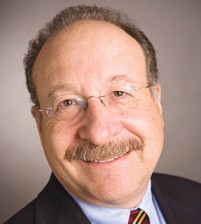The case for a defined contribution pension system in California

Henry Dubroff
Grass-roots efforts underway in Ventura County and a few other places may lead California to start junking its expensive and debt-ridden pension system in favor of a 401(k)-like substitute.
That ultimately may be the only solution to a problem that will gobble up bigger and bigger slices of state and local government tax dollars over time, preventing funds from flowing to schools, public safety, routine maintenance and infrastructure improvements.
The Ventura County Taxpayers Association, with a push from Supervisor Peter Foy, has begun a petition drive to get a pension overhaul on the ballot. It would, as I understand it, convert the county’s entire defined-benefit pension plan to a defined-contribution plan along the lines of a 401(k). It would make sense, then, for Ventura County’s workers to begin paying into Social Security and for the workers to receive benefits accrued to date.
How bad is the current situation? Research by Transparent California, which has launched a new website to track out-of-control pensions, suggests that 166 people in Santa Barbara County’s system and 373 people in Ventura County are collecting pensions of more than $100,000.
“We cannot be paying hundreds of thousands of dollars a year for people to not go to work,” Mark Bucher, president of the organization, told me in a Feb. 5 phone chat. (Find out more about the group at www.TransparentCalifornia.org.)
Unlike partial reforms that have taken place in Ventura County and elsewhere, the Ventura County Taxpayer’s Association’s proposed ballot initiative would also include public-safety workers, who are used to early retirements and big packages. You can practically hear the shrieks and howls from the Sheriff’s Department already.
Why now? It may in part be because retired Ventura County Sheriff Bob Brooks, already collecting $283,000 a year in benefits, seems to have ignited a powder keg when he sued the county in a bid to collect an additional $75,000 per year “supplement.”
A defined contribution plan for civil servants has other advantages, to wit:
• Fixed costs: Instead of unquantifiable benefits that could lead to bankruptcy or substantial clawbacks, local and state governments will know precisely what their obligation is every year. The need for expensive and time consuming investment oversight will be diminished and then disappear.
• Portability: Instead of being locked into their jobs forever or getting bonus awards that allow them to double dip, public-sector workers can move from job to job without risking their retirement funds or putting taxpayers at risk.
• Strengthening Social Security: Bringing public sector workers into the Social Security system will actually strengthen the retirement plan in the short- and the long-term.
• An end to abuses: By fixing contributions at a percentage of earnings, there won’t be as big an incentive to spike salaries at the end of a career to get a bigger monthly check forever. That will actually reduce inequality in a system where the average public sector worker is not getting the big monthly payout of the fat cats.
• An estate for all: Former Sheriff Brooks said he wanted to use the extra benefits to finance his philanthropic efforts in places like Haiti. Under a defined contribution plan, he’d have a personal fortune, worth millions, that could be donated to charity — at no additional expense to the taxpayer.
According to the folks at Transparent California, Sonoma County and San Jose are looking at ways to fix their pension systems. And the problem seems to have gotten dramatically worse since talk of pension reform first surfaced a decade ago.
Today there are 30,000 people in the system earning more than $100,000 a year in taxpayer-funded retirement when the median household income in California is just $61,000 per year. In a defined contribution system, we’d applaud the ability of retirees to invest well and live well — but the current system just puts taxpayers at greater peril.
In Santa Barbara County, Supervisor Peter Adam has courageously raised the question of how to fund some $18 million a year in ongoing maintenance costs that have been deferred. Pensions now gobble up something like $90 million a year in Santa Barbara County and are growing at a double-digit clip.
Shifting to a defined-contribution pension plan would be a great place to start.
• Contact Henry Dubroff at [email protected].









